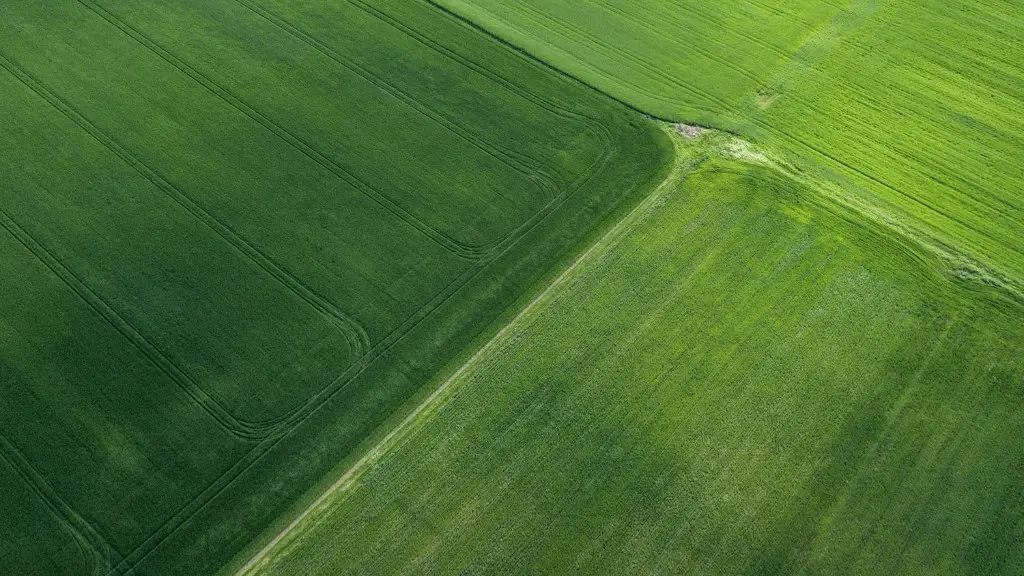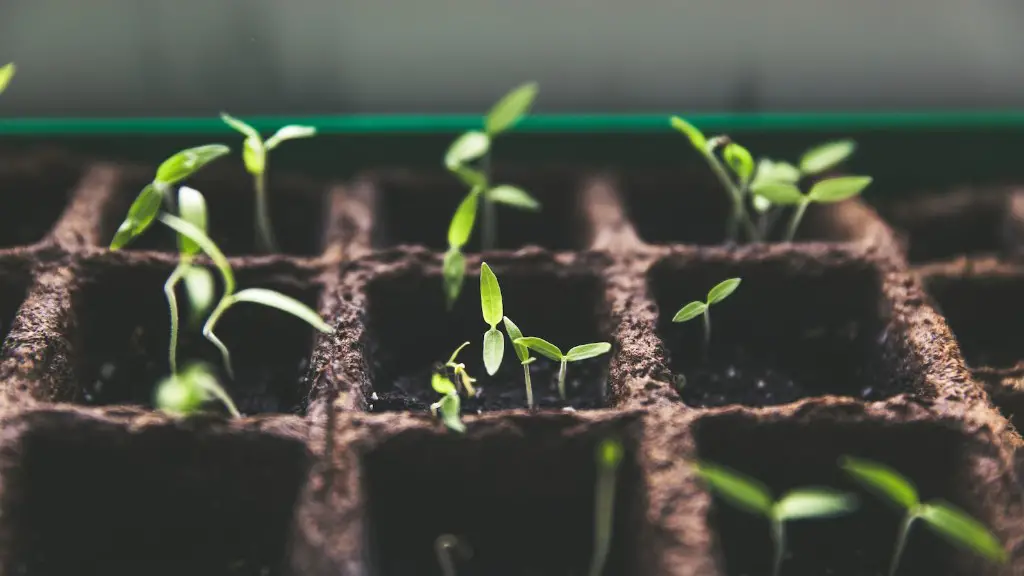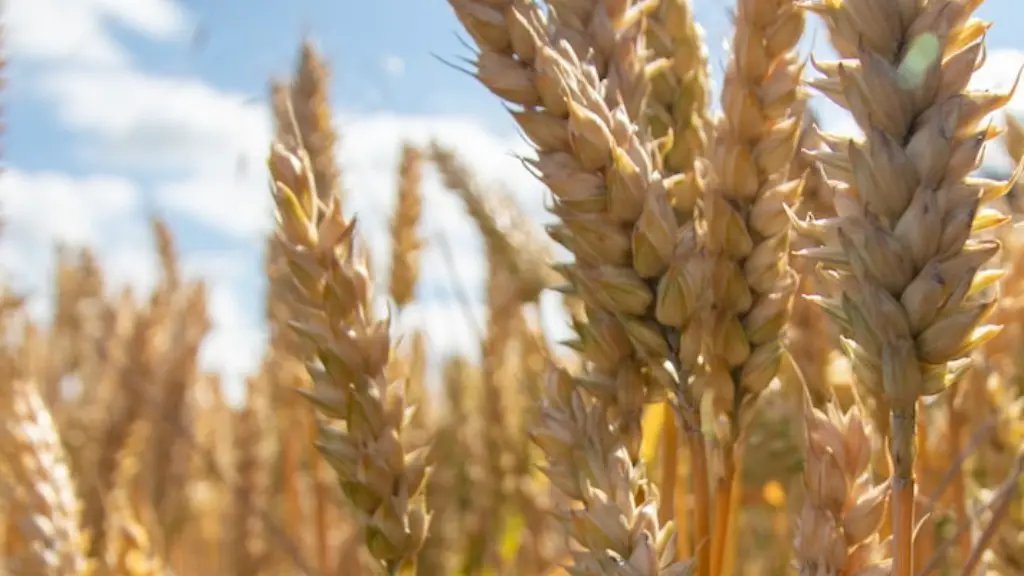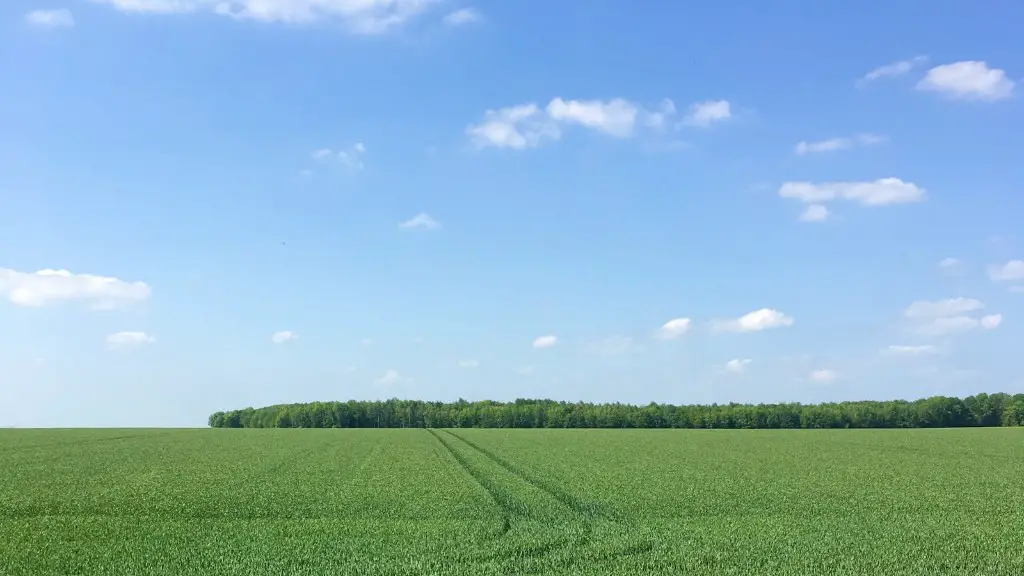Innovation in agriculture refers to the process of developing new ideas or products and improving existing ones to make the agricultural sector more efficient and productive. Agricultural innovation can take many forms, from new ways of growing crops and raising livestock, to new methods of packing and processing food, to new ways of using and managing land and water resources.
There is no one-size-fits-all answer to this question, as the term “agricultural innovation” can mean different things to different people. However, in general, agricultural innovation refers to the process of introducing new or improved ideas, products, or services into the agriculture sector. This can include anything from new crop varieties and production methods to new ways of marketing and selling agricultural products.
What is the meaning of agricultural innovation?
Agricultural innovations are constantly being developed in order to increase production and enhance quality. New techniques and technologies are being used to improve yields, reduce costs, and improve the quality of products. Agricultural innovations can be divided into two main categories: those that improve production and those that improve quality.
Production innovations are concerned with developing new techniques and technologies that increase yields. This can be done through better irrigation, soil management, and pest control. Quality innovations are concerned with developing new techniques and technologies that improve the quality of products. This can be done through better processing, packaging, and storage methods.
Both production and quality innovations are important in order to meet the ever-increasing demand for food. Agricultural innovations will continue to play a vital role in ensuring that food production keeps up with population growth.
Today, many farms are using advanced technologies to improve their operations. These technologies include robots, temperature and moisture sensors, aerial images, and GPS technology. These tools help farmers be more efficient, safe, and environmentally friendly.
What is one example of an agricultural invention
The thresher is a machine that helps farmers to separate grain from the straw. The invention of the thresher made this process much easier. Two brothers, Hiram and John Pitts, invented the first American thresher in 1830. The thresher helped speed up the process of separating grain, which was a huge help to farmers.
Agriculture has been a major contributor to the growth of cities and civilizations. By providing food for the growing population, agriculture has allowed cities and civilizations to thrive. Today, the global population is more than seven billion people, thanks in part to the advances in agriculture.
What are the innovative ideas in agriculture?
The agricultural industry is constantly evolving and innovating in order to keep up with the ever-changing demands of the market. Here are 9 of the latest trends in agriculture that are sure to make an impact in 2021:
1. Software-as-a-service solutions for orchard management:
With the help of technology, farmers are now able to manage their orchards more efficiently and accurately. Orchard management software-as-a-service solutions provide real-time data and analysis that can help farmers make better decisions about irrigation, fertilization, and pest control.
2. Yield monitoring and estimation:
Yield monitoring is a vital tool for farmers to track and optimize their production. By using yield monitoring systems, farmers can estimate their yields more accurately, which can help them make better decisions about seed selection, planting, and crop management.
3. Farm management platforms:
Farm management platforms are web-based or mobile applications that provide farmers with a one-stop-shop for all their farm management needs. These platforms offer a variety of features such as GPS mapping, field data tracking, yield analysis, and weather forecasting.
4. Utilization of drones:
Drones are becoming increasingly
The Agricultural Innovation System (AIS) is a framework that describes the various elements that contribute to the development and diffusion of agricultural innovations. The AIS is comprised of four main components: research and education, business and enterprises, bridging institutions, and the enabling environment.
Research and education are responsible for generating new knowledge and technologies. Business and enterprises are responsible for translating these innovations into products and services that can be adopted by farmers. Bridging institutions are responsible for facilitating the linkages between different actors in the AIS and for disseminating information about new innovations. The enabling environment consists of the policies, regulations, and infrastructure that support the functioning of the AIS.
The AIS framework is useful for understanding the complex process of agricultural innovation and for identifying the various actors and institutions that can contribute to this process. It can also be used to assess the strengths and weaknesses of a particular AIS and to identify opportunities for improvement.
What are the top 5 technology innovation in agriculture?
There have been many innovative technologies in agriculture in recent years. Here are five of the most notable:
1. Data preserved in soil: Farmers are now able to collect data about the health of their soil and crops, which can be used to improve yields.
2. Innovative agriculture moving underground: A new type of agriculture is emerging that takes advantage of the cooler temperatures and higher humidity underground.
3. Greens fed on rainbow waste: A new type of algae is being used to feed livestock, which is more efficient and produces less waste.
4. Using the sun to generate freshwater: Solar stills are being used to generate freshwater from salt water, which can be used for irrigation.
5. Agriculture by aircraft: Farmers are now using aircraft to apply fertilizer and pesticides, which is more efficient and reduces the need for heavy machinery.
Innovation in farming has led to higher crop yields, which in turn has lead to more land being spared from farming. This has had a positive impact on the environment, as it has allowed for a more sustainable use of resources.
What are 5 examples of technologies used in agriculture
GPS and GIS software in agriculture has been around for a while but is still considered new technology. It allows farmers to track their crops, soil, and irrigation systems via satellite and better plan their farming operations. This type of technology is critical in large farming operations where every acre counts.
Satellite imagery is another technology that is becoming more common in agriculture. It allows farmers to see their crops from above and track the progress of growth and yield. This information can be used to adjust farming operations accordingly.
Drones and other aerial imagery are also becoming more popular in agriculture. Farmers can use them to get a close-up view of their crops and see things that they may not be able to see from the ground. This information can be used to make decisions about irrigation, fertilization, and pest control.
Farming software and online data are also becoming more important in agriculture. Farmers can use these tools to track their yields, soil conditions, and weather patterns. This information can help them make better decisions about their farming operations.
Merging datasets is another new technology that is being used in agriculture. This allows farmers to combine data from different sources to get a more complete picture of their crops and operations. This information can be used
Soil and water sensors are used to collect data on soil moisture content and water level. This data is used to improve irrigation efficiency and help farmers make decisions on when to water their crops.
Weather tracking technology is used to collect data on weather patterns. This data is used to help farmers make decisions on when to plant and harvest their crops.
Satellite imaging is used to collect data on crop growth. This data is used to help farmers make decisions on when to fertilize their crops.
Pervasive automation is used to automate tasks such as irrigation and crop monitoring. This technology helps farmers save time and reduce labor costs.
Minichromosomal technology is used to create disease-resistant crops. This technology helps farmers reduce crop losses due to disease.
RFID technology is used to track livestock. This technology helps farmers keep track of their animals and ensure their safety.
Vertical farming is used to grow crops in vertically stacked layers. This technology helps farmers save space and water.
What were 4 innovations from the agricultural revolution?
The four key innovations that transformed agricultural production in the 20th and early 21st centuries are the internal combustion engine, the Haber-Bosch process of producing nitrogen fertilizer from the air, the introduction of hybrid corn, and the focus on crop genetics.
The internal combustion engine made it possible for farmers to use tractors and other mechanized equipment to vastly increase their productivity. The Haber-Bosch process made nitrogen-based fertilizers more affordable and available, which boosted crop yields. The introduction of hybrid corn varieties helped farmers to overcome the challenges posed by disease and pests. And the focus on crop genetics led to the development and use of farm chemicals, which also increased yields.
Farm production involves producing fruits, vegetables, plants, and varieties of crops to meet demand for agricultural products throughout the country and abroad. Forestry and fishing are agricultural activities that include forestry and harvesting fish in water farms or in their natural habitat.
How has agricultural innovation negatively impacted society
Though agricultural technologies have led to increased yields and productive output, they have also had negative impacts on the environment. These include soil degradation from overuse of chemicals and tilling, air and water pollution from runoff of pesticides and fertilizers, loss of biodiversity from monocropping, and the disruption of food webs from the loss of key species. While some of these impacts can be mitigated through changes in practices, others will require more fundamental changes to the way we produce food.
Technology in agriculture has revolutionized the way farmers grow crops and raise livestock. By utilizing advances in biotechnology, farmers have been able to increase crop yields and produce pest-resistant strains of plants. Mechanization has made the tasks of tilling, harvesting, and transporting crops much easier, leaving farmers with more time to focus on other aspects of their business.
Why is agriculture the most important invention?
Agriculture is one of the most important inventions of human history. It allowed for the growth of civilizations by enabling people to grow all the food they needed in one place, with a much smaller group of people. This led to massive population growth and the creation of cities and trade. Agriculture has had a profound impact on the world and has greatly improved the human condition.
1. The bag that slow cooks food is a great innovation for those who do not have time to cook or do not know how to cook.
2. The bottle light bulbs are a great innovation for those who do not have access to electricity or who want to save on their power bill.
3. The energy-producing roads are a great innovation for those who want to reduce their carbon footprint or who want to generate renewable energy.
4. The 1 dollar microscope is a great innovation for those who want to have access to a microscope without spending a lot of money.
5. The medical drones are a great innovation for those who want to have access to medical care in remote areas.
6. The mobile water safety check is a great innovation for those who want to make sure their drinking water is safe.
7. The solar rechargeable hearing aids are a great innovation for those who want to save money on their power bill or who want to be more environmentally friendly.
8. The wearable breast cancer detector is a great innovation for those who want to be able to detect breast cancer early.
9. The safe laundry detergent bottle is a great innovation for those who want to make sure their laundry detergent is not toxic.
10.
Conclusion
Agricultural innovation refers to the application of new ideas, technologies or practices to improve the productivity, profitability and sustainability of farms and the agri-food sector.
Agricultural innovation is the introduction of new or improved products, services or processes in the agricultural sector. It can also be the application of new or improved technologies to the production, processing or distribution of agricultural products. Agricultural innovation can help to improve the efficiency and productivity of the agricultural sector, as well as the quality and safety of agricultural products.





